Top 10 most interesting facts about chameleons

The chameleons belong to a family of lizards well-adapted to an arboreal lifestyle. It is considered one of the unique creatures on our planet. Almost everyone knows the fact that chameleons are excellent disguisers. Sometimes a person can be very close to it but not know about it.
There has been a debate about these animals for a long time. Someone believes they are amphibians, and who is sure they belong to a completely different class? But scientists have answered the question. Chameleons are reptiles. So let's take a closer look at them.
We present a list of 10 interesting facts about chameleons.
1. Hypocritical people are called chameleons.

Surprisingly, sometimes chameleons are called not animals but people. They try to adapt to new and unexpected circumstances. At the same time, they can do this almost instantly.
Chameleon people often lie, and they are also duplicitous. Their genuine opinion is complicated to find out. They behave differently depending on the situation. For example, the authorities will try to please everyone, but those lower in position will be rude and ridiculed in front of others.
2. The eyelids are fused and permanently closed, with an opening for the pupil.
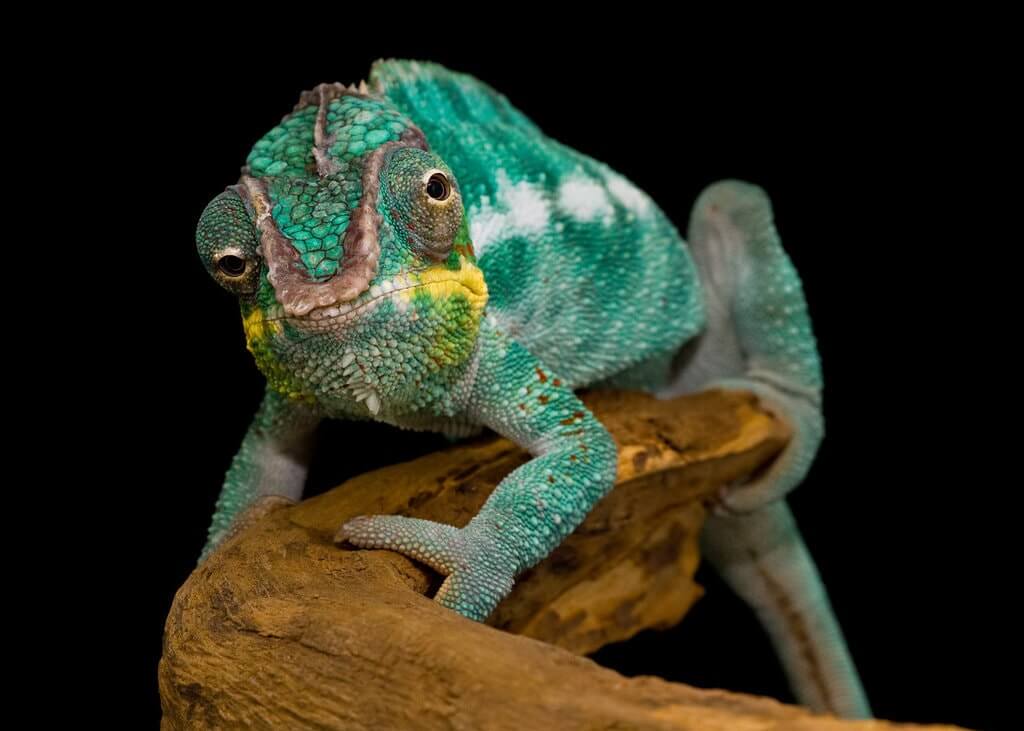
The chameleon's body is quite unusual. It is slightly flattened from the sides, and the back is arched. It often has a comb, which is decorated with different colors. Very often, because of it, it may seem that the animals are bent over.
Their head looks even more impressive. Some species have a hump, while others have superficial growths that resemble horns in some ways. Such various decorations can only be seen in the male sex. In women, they are less pronounced.
It is worth noting that the eyelids of reptiles are fused tightly and almost cover the eye openings. There are only small slits where you can see the pupils. That is why sometimes it seems they are a bit convex, although this is not the case.
Chameleons rotate their eyes like telescopic tubes. The viewing angle is 360 degrees. At the same time, they can be turned independently of each other. This allows animals to focus well on even the most miniature objects.
But they don't have ears. Nevertheless, they perceive sounds of different frequencies.
3. There are about 150 different types of chameleons.
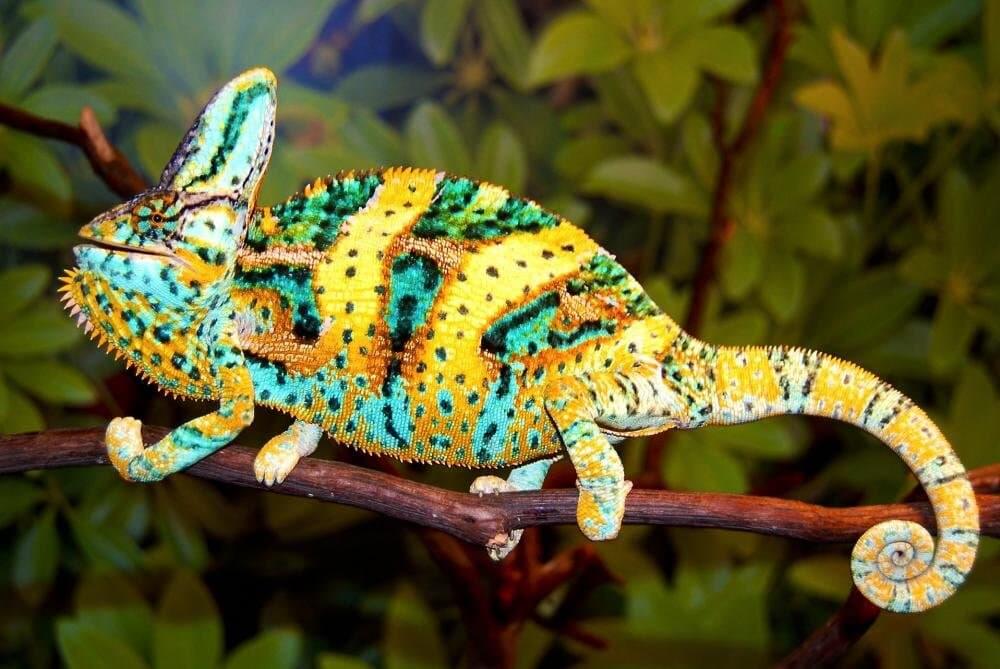
Currently, about 150 species of chameleons are known. Almost all of them are listed in the Red Book. Many are on the verge of extinction.
Some people prefer to have such an exotic animal at home. But not everyone understands that, for various reasons, a chameleon cannot live in captivity. More precisely, it is possible, but you must choose specific types.
Perfect for Yemen, Panther, Carpet, and many others. They adapt to involuntary living conditions and have their own offspring.
Most chameleons, out of 150 species, are found only in Madagascar and its nearby islands.
4. During a fright, they increase in size
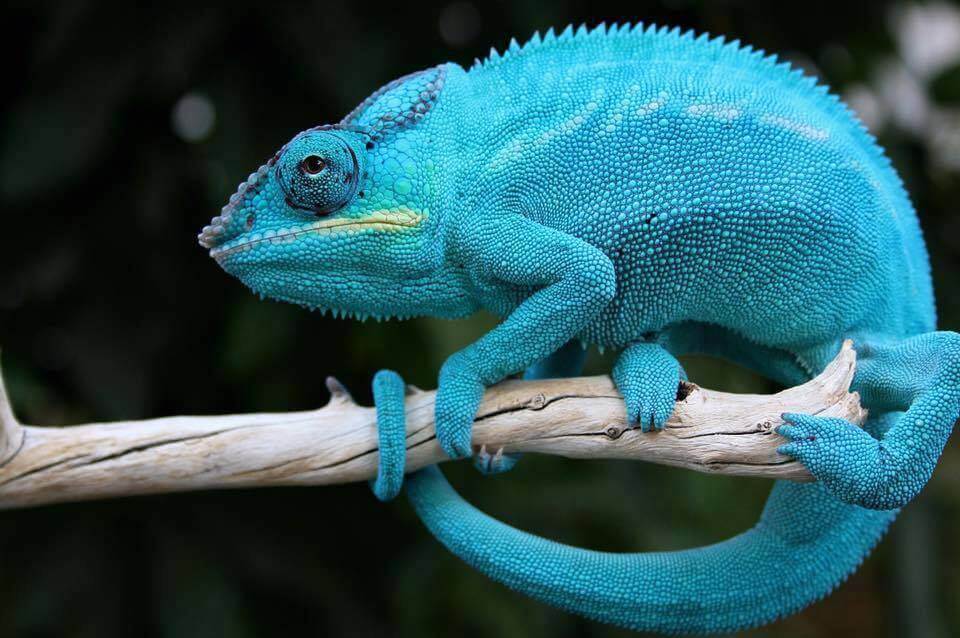
Sometimes, under the influence of mood, the chameleon's color can change dramatically. For example, if an animal feels threatened, it can change its color from green to darkest. But that's not all. At such moments, the chameleon can swell up and, at the same time, significantly increase in size.
At the same time, it opens its mouth wide and makes sounds similar to the hissing of a snake. These animals are pretty formidable during mating games. Approximately the same action occurs.
5. The process of throwing out the tongue lasts 1/20 of a second

More recently, scientists conducted some shocking experiments. They looked at about twenty species of chameleons, which differ in size and habitat. In the room, a high-speed camera recorded various processes: their movement and color change.
The chameleons were perched on branches, but their bodies were completely still. They caught insects with their tongues. The ejection process lasted only 1/20 of a second. In just 3 seconds, the animal could recognize the insect. The fastest were dwarf species. Such chameleons live in the mountain ranges in Tanzania.
6. Average body length 30 cm
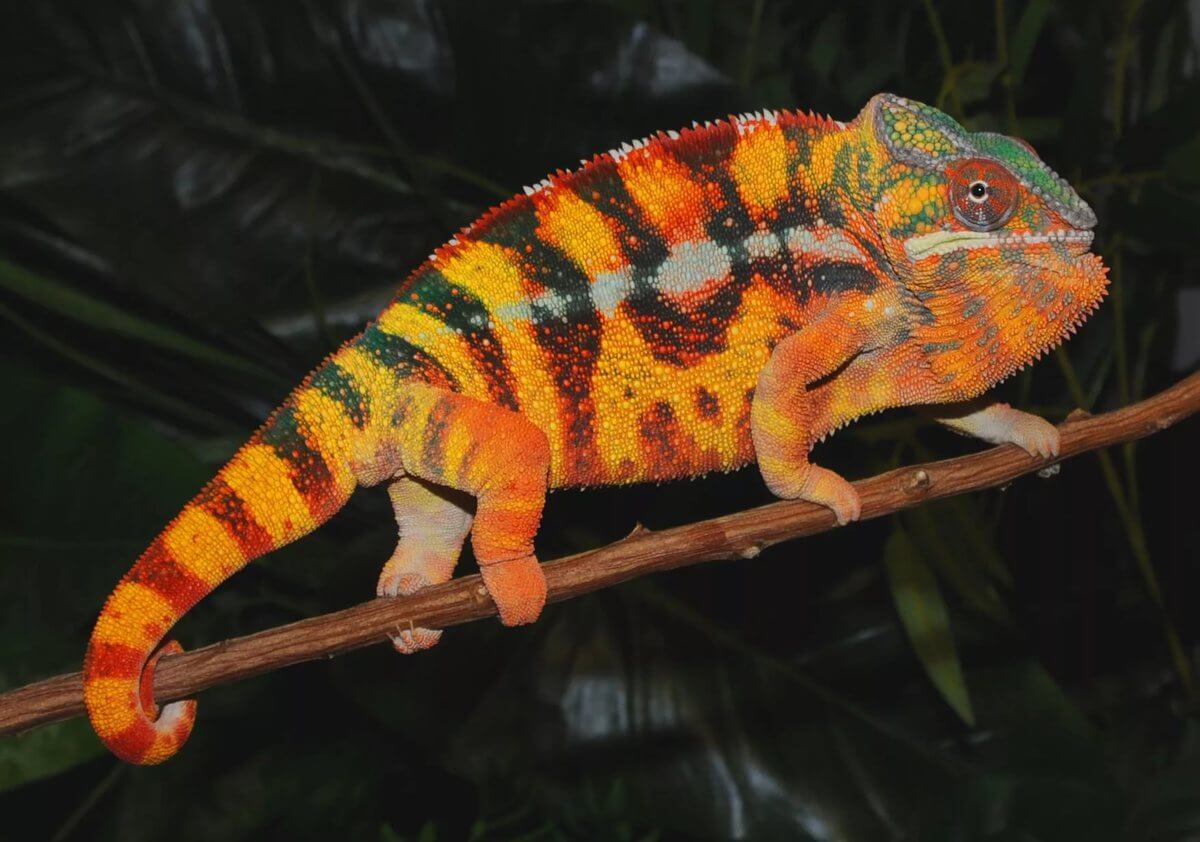
The length of a chameleon's body depends entirely on its species. But the average size is always about 30 cm. For example, a spiny species can reach a length of almost 45 centimeters, but females will be much smaller in Yemen, which is nearly 55 cm, panther-35 cm, small-25 cm, and European or common 20 cm.
It is worth noting that the smallest chameleon species was found quite recently, not far from the island of Madagascar. It is only 29 mm long. It can easily fit on a matchhead.
Such species are constantly on the forest floor. Scientists believe that these are dwarf species that are under threat of complete extinction. Very often, the forests of these places fall under severe deforestation.
Such a small type of chameleon feeds on the smallest insects. So that they are not disturbed, they climb to the very tops of trees.
7. Use color change for communication
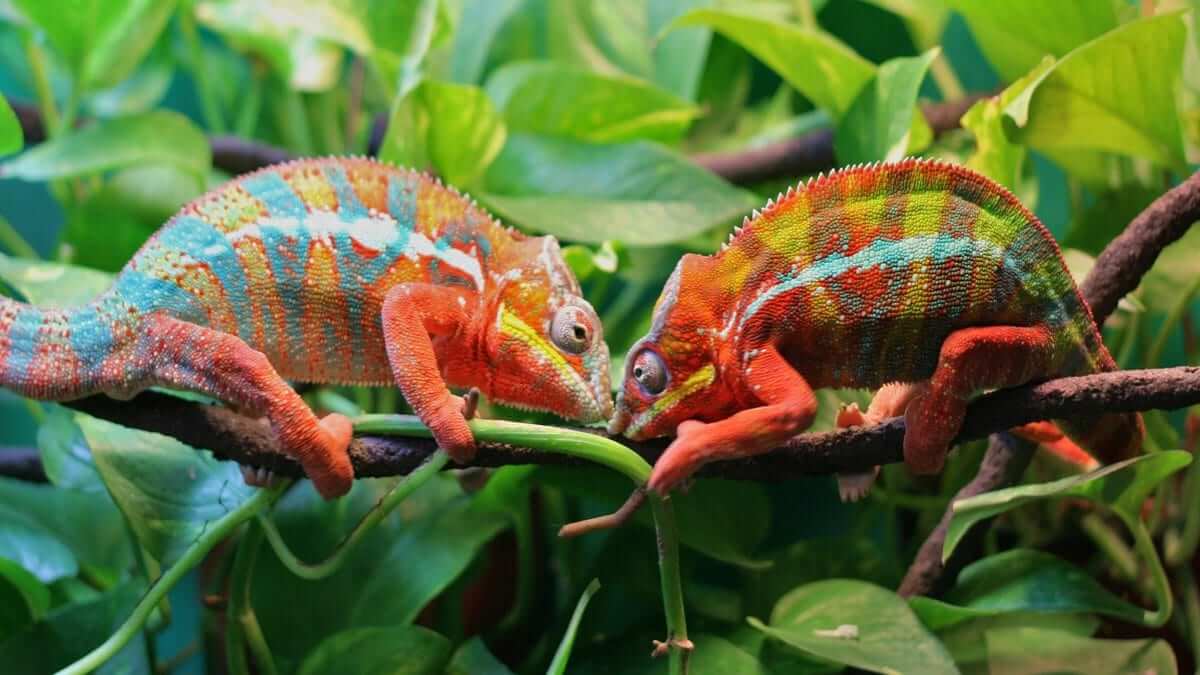
First, the color change in chameleons occurs for communication, not protection. But a difference can also happen if the animal is scared or someone has picked it up.
Chameleons can change color if the opposite sex comes into view due to a temperature difference or lighting.
The changes help the chameleon hide from its enemies as well. It is worth noting that it can become the color of the surface on which it is located. At the same time, the animal moves very slowly, and this also saves its life because, in most cases, it goes unnoticed.
8. Able to change body color and pattern

The color change is the main feature of chameleons. Their skin is a kind of armor with scales and bumps. Each bump and scale fits very tightly to the other. They can change them thanks to chromatophores.
Each cell has a branched structure. One part is located in the depth of the skin, and the other is in the upper layers of the skin. It is in it that there are unique capsules and certain pigments that contain various paints.
The color and pattern of the skin vary from orange to blue and dark green. They can change it depending on their location, health, and emotions.
9. They live on the island of Madagascar.
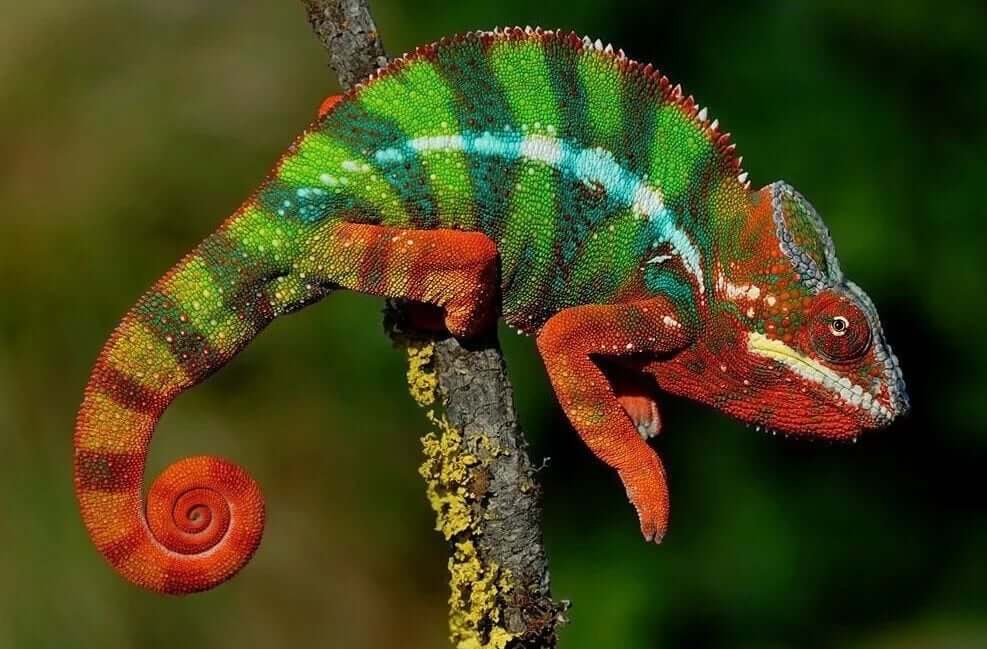
Chameleons live in Africa, India, and Southern Europe. But most of them are in Madagascar. They are also found in the tropics and savannas. Very rarely seen in deserts and steppes.
10. They are arboreal

All chameleons live on the branches of trees. Instead, it is most convenient for them since the disguise is completely simple. It is worth saying that sometimes they still go down. This happens during the mating season.
It is pretty difficult for them to move on the ground. If you pay attention, you can see that the chameleons ' gait on the earthy surface is slightly swaying. Only thanks to the peculiar points of support can they feel great in the thicket.
Most often, chameleons are active during the day. They don't like to move around all the time. It is mainly located in one place, and they try not to leave it. But at the same time, they run very fast, if there are reasons for it.





